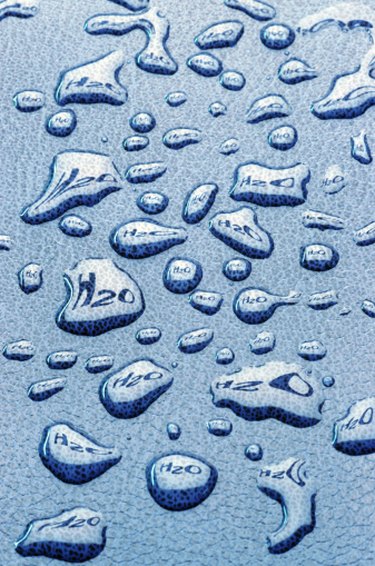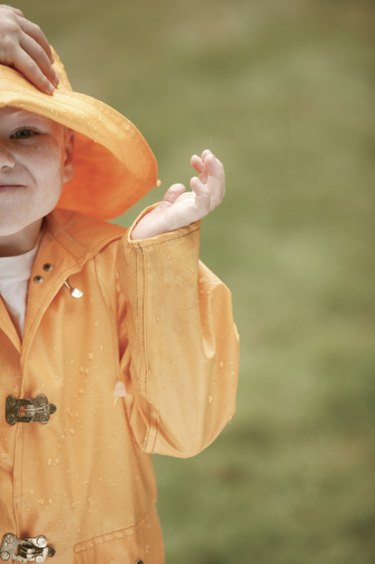
Waterproofing is the process by which a substance is applied to a surface, be it concrete, leather footwear, clothing or sporting goods, that renders the surface impermeable to water. Simply put, it creates a barrier that makes it impossible for water to pass through the material. This property prevents flooding and dampness in buildings with surfaces that are waterproofed, preserves clothing and footwear from being spoiled by water when they have been treated with waterproofing sprays and keeps you dry inside your waterproofed tent when you are camping.
Waterproofing Properties
Video of the Day

The purpose of all waterproofing treatments, whether modern or ancient, is to close the capillaries in a surface so that water falls on it but cannot pass through it. This is true whether a material is manufactured or organic and has natural water-repellent properties. The materials used to create this impermeable barrier can be as high tech as silicone or fluoropolymer liquids and aerosol sprays or as low tech as spreading turpentine and tallow (rendered animal fat) on the surface of a piece of cloth or leather shoes. There are even plants that have natural waterproofing abilities because they contain surface lipids that repel water. The leaves of the lotus plant are the most water-repellent surfaces on Earth.
Video of the Day
Waterproofing Clothing

From the time that humans decided it was better to be clothed than naked, they have been looking for ways to make some of their clothing water repellent. The ancients used natural animal fats like lanolin to coat wool and accentuate its natural water-repelling ability, and they coated linen and cotton with beeswax to make them impermeable to water. In the 19th century, the mackintosh coat, with its rubberized inner layer, became the precursor of the modern raincoat, and oil skins, protective rain wear made by impregnating cotton cloth with oil, was used for a century before being replaced by plastic-coated fabrics. In more modern times silicon and polymer sprays have been used to make clothing waterproof.
Waterproofing Sports Gear

Anyone who has spent a rainy night in a tent that leaks understands the importance of waterproofing sports gear to prevent rain and snow from spoiling your intended purpose for it. Any kind of material designed for outdoor use can be treated with silicone, and water-based and fluorine-based waterproofing products to increase or restore its water-repellent properties and extend its life. Awnings, tents, boat covers, umbrellas, beach bags, golf bags and flags should be waterproofed every few years, depending on how often they are used and the amount of their outdoor exposure.
Waterproofing Buildings
The materials, like concrete and even wood, used to construct residential and commercial buildings can all benefit from waterproofing with liquid polymers that produce an impermeable membrane that blocks the capillaries and cracks in walls and floors that are exposed to moisture. These liquids can be used on exteriors and interiors, baths and showers, laundry rooms, kitchens and countertops. Do-it-yourselfers can use a homemade waterproofing solution of ammonium stearate and hot water on the walls and floors of their homes.
Concerns
Some health and environmental concerns have been raised about the toxicity of commercial waterproofing sprays, particularly those containing fluoropolymers. There have been reports of respiratory side effects in both humans and pets after being exposed to the sprays.